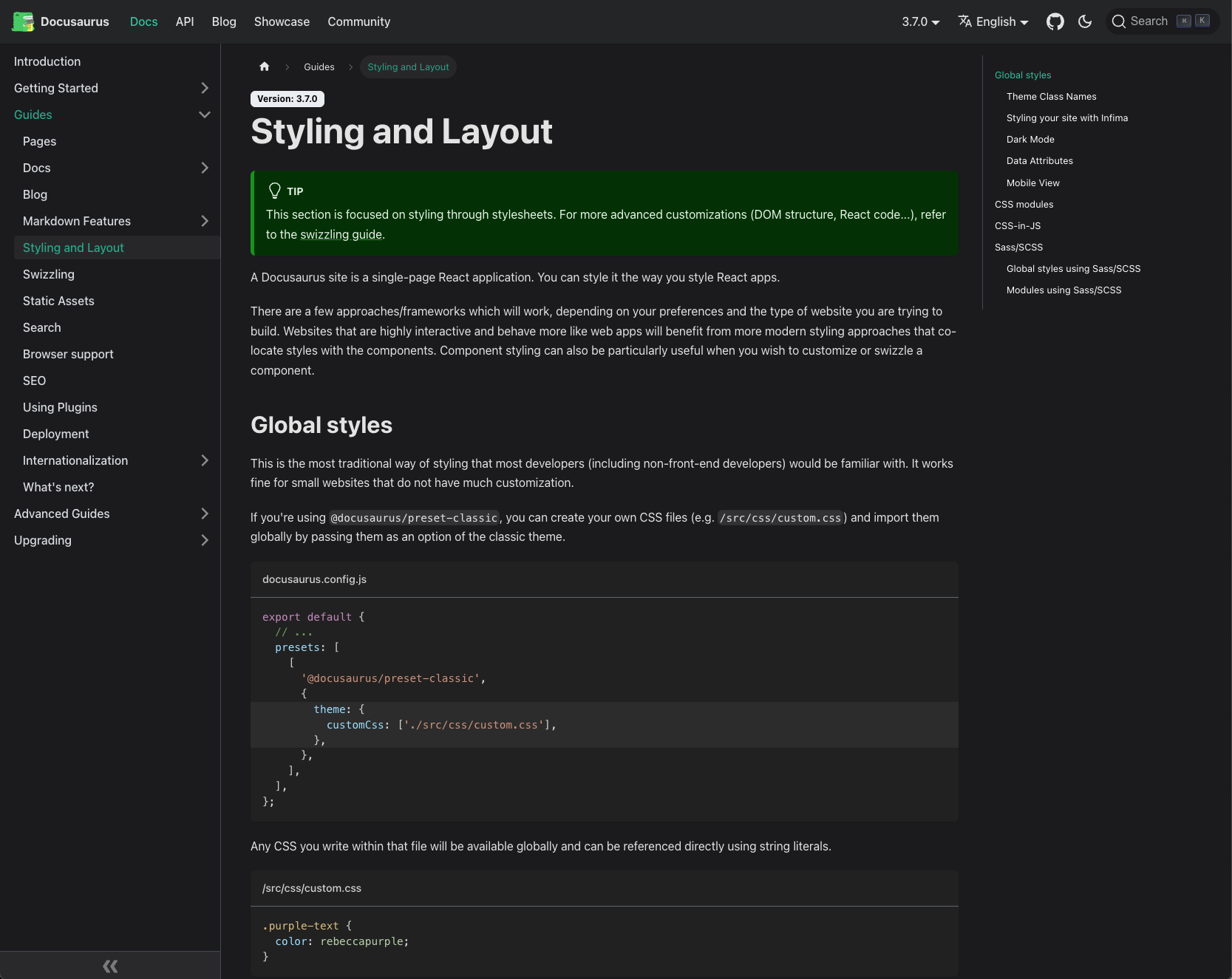Docusaurus: The Ultimate Tool for Documentation Websites
Posted by Nuno Marques on 16 Jan 2022
Introduction
If you’ve ever struggled with maintaining well-structured documentation for your projects, Docusaurus might be the tool you need. Developed by Facebook, Docusaurus is an open-source static site generator tailored specifically for documentation. It’s built with React and supports Markdown, making it an excellent choice for developers and technical writers alike.
In this article, we’ll explore what makes Docusaurus great, how to get started, and why it’s an excellent choice for your next documentation project.
Why Choose Docusaurus?
Docusaurus simplifies the process of creating, maintaining, and deploying documentation websites. Here’s why developers love it:
🚀 Easy Setup
- A single command gets your project up and running.
- No complex configurations required—just start writing in Markdown.
📄 Markdown-Powered
- Supports Markdown out of the box.
- Easy to format documentation without dealing with complex HTML or JSX.
🎨 Customizable with React
- Extend the site with React components for added interactivity.
- Built-in support for themes and plugins.
🌍 Multi-language Support
- Integrated i18n (internationalization) support.
- Helps you create localized documentation effortlessly.
📚 Versioned Documentation
- Keep track of different versions of your documentation.
- Users can easily switch between old and new versions.
⚡ Fast and Optimized
- Uses static site generation for lightning-fast performance.
- SEO-friendly out of the box.
Getting Started with Docusaurus
Step 1: Install Docusaurus
To get started, open your terminal and run:
npx create-docusaurus@latest my-website classic
cd my-website
npm start
This will create a new Docusaurus project and start a local development server.
Step 2: Add Documentation
Your documentation files are stored in the docs folder. To add a new page:
- Create a Markdown file inside
docs/, e.g.,docs/getting-started.md. - Add some content using Markdown syntax.
- Restart the development server (
npm start) to see the changes.
Step 3: Customize the Navbar and Sidebar
Modify the sidebars.js file to structure your documentation:
module.exports = {
someSidebar: {
'Getting Started': ['getting-started'],
'Advanced Guides': ['customization', 'plugins'],
},
};
Customizing Your Docusaurus Site
Docusaurus offers extensive customization options:
🎨 Theming
- Modify the default theme using CSS or Tailwind.
- Use the Infima CSS framework for easy styling.
🔌 Plugins
- Add analytics tools like Google Analytics.
- Use PWA (Progressive Web App) plugins for offline access.
📢 Blog Integration
- Comes with a built-in blog feature.
- Supports Markdown-based blog posts.
Deploying Your Docusaurus Site
Once your documentation is ready, you can deploy it with GitHub Pages, Vercel, or Netlify.
Deploy to GitHub Pages
-
Build the static files:
npm run build -
Deploy to GitHub Pages:
GIT_USER=<YourGitHubUsername> npm run deploy
Key Takeaways
✅ Docusaurus makes documentation easy with Markdown support and built-in navigation.
✅ React-based customization lets you extend functionality effortlessly.
✅ Versioning, theming, and plugins enhance the documentation experience.
✅ Easy deployment with GitHub Pages, Netlify, and Vercel.
Next Steps
- Try setting up Docusaurus for your next project.
- Explore advanced features like custom components and plugins.
- Check out the official Docusaurus documentation for more insights.
🚀 Ready to build an awesome documentation site? Give Docusaurus a spin today!
